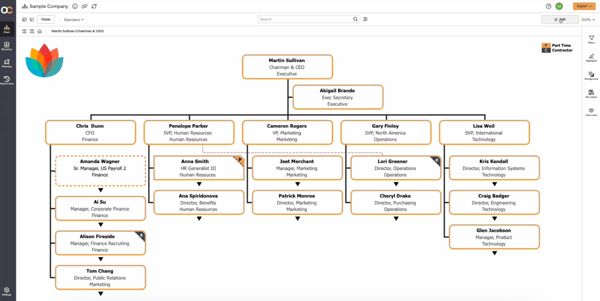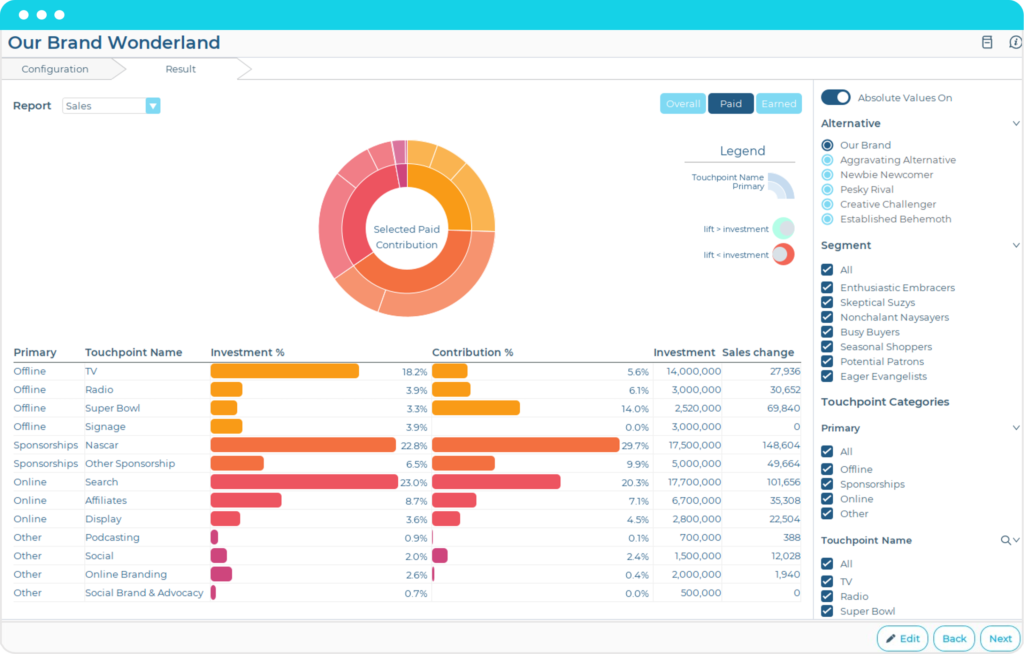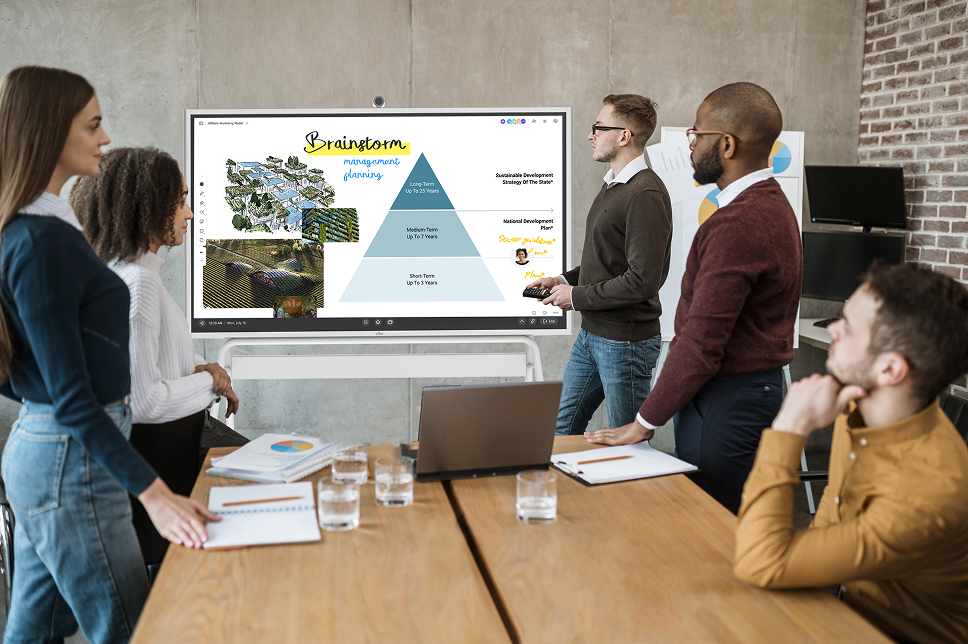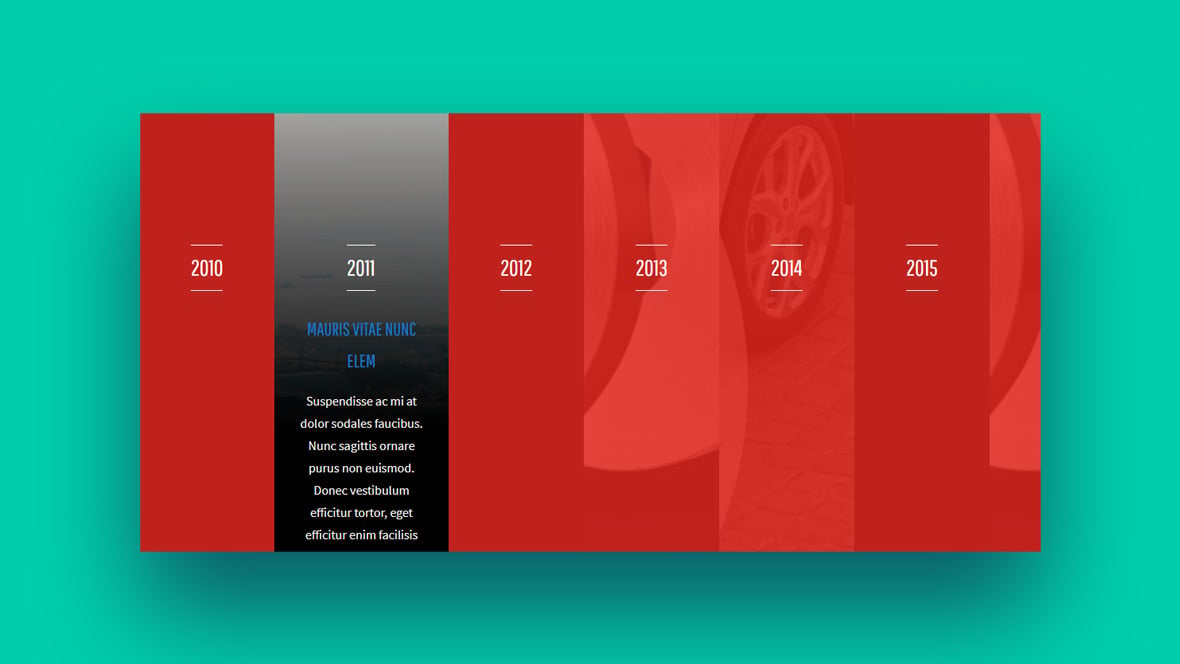Transforming Team Dynamics: Building Collaborative Presentation Boards
Enhance organizational structure through visual collaboration
In today's rapidly evolving workplace, I've noticed how the way we visualize and collaborate on team structures has fundamentally changed. The static organizational charts of yesterday no longer serve the dynamic, cross-functional teams that drive modern organizations. As we navigate increasingly complex team relationships, I believe we need more sophisticated, interactive tools to represent how we work together.
Throughout my experience working with diverse teams, I've seen firsthand how the right collaborative presentation boards can transform team dynamics, clarify roles and responsibilities, and ultimately drive better organizational outcomes. In this guide, I'll share my insights on creating powerful visual collaboration spaces that enhance team structure and performance.

Understanding the Evolution of Collaborative Presentation Boards
I've watched the evolution of presentation tools over the past decade, and the shift from static slides to dynamic, collaborative workspaces has been remarkable. Traditional presentation software was designed for one-way communication—a presenter sharing information with an audience. Today's teams need something fundamentally different: interactive spaces where multiple contributors can visualize, modify, and enhance team structures in real time.
Modern team structures have grown increasingly complex. We now operate in matrix organizations, agile teams, cross-functional project groups, and remote distributed workforces. These complex arrangements simply can't be effectively represented in traditional organizational charts or basic presentation slides. When I work with impactful project team presentations, I've found that dynamic visualization is essential for conveying these nuanced relationships.
Evolution of Team Presentation Tools
The statistics speak for themselves. In my research, teams using collaborative visual tools report:
- 37% faster decision-making processes
- 42% improvement in understanding complex team relationships
- 53% better alignment on roles and responsibilities
- 64% higher engagement during team structure discussions
For distributed teams in particular, I've found that real-time visual collaboration tools aren't just helpful—they're essential. When team members can't gather in a physical space to sketch out team structures on a whiteboard, digital collaborative boards become the crucial shared space where organizational understanding is built.
Essential Elements of Effective Team Structure Visualization
In my experience designing team structure visualizations, I've identified several core components that must be present for these collaborative boards to be truly effective. First and foremost, we need clear visual hierarchy techniques that accurately represent reporting relationships without creating an overly rigid impression.
flowchart TD
CEO[CEO] --> COO[COO]
CEO --> CTO[CTO]
CEO --> CMO[CMO]
subgraph Product
CTO --> Engineering[Engineering Lead]
CTO --> Design[Design Lead]
Engineering --> DevTeam[Development Team]
Design --> UXTeam[UX Team]
end
subgraph Marketing
CMO --> Digital[Digital Marketing]
CMO --> Brand[Brand Strategy]
end
subgraph Operations
COO --> HR[Human Resources]
COO --> Finance[Finance]
end
classDef executive fill:#FF8000,color:white,stroke-width:2px
classDef department fill:#42A5F5,color:white,stroke-width:1px
classDef team fill:#66BB6A,color:white,stroke-width:1px
class CEO,COO,CTO,CMO executive
class Engineering,Design,Digital,Brand,HR,Finance department
class DevTeam,UXTeam team
When I create collaborative team structure boards, I always implement a thoughtful color-coding strategy. This isn't just about aesthetics—it's about cognitive efficiency. In my designs, I typically use:
- Warm oranges/reds for executive leadership
- Blues for operational departments
- Greens for product/development teams
- Purples for marketing/creative functions
I've learned that balancing detail and clarity is perhaps the most challenging aspect of team structure visualization. Too much detail creates cognitive overload; too little fails to convey the necessary information. My approach is to create layers of information that can be expanded or collapsed as needed, allowing users to drill down into specific areas of interest.

Another essential element I always incorporate is the visualization of both formal and informal relationships. Traditional org charts only show reporting lines, but in reality, teams collaborate across those boundaries constantly. I use dotted lines, overlapping areas, or connection indicators to show these critical informal relationships that often drive an organization's actual work.
Building Interactive Team Structure Boards: Step-by-Step Process
When I'm building interactive team structure boards, I follow a systematic process that ensures the final product is both useful and user-friendly. My first step is always establishing clear objectives—what specific organizational challenges are we trying to solve with this visualization?
flowchart LR
A[Define Objectives] --> B[Create Base Template]
B --> C[Add Team Structure]
C --> D[Implement Interactive Elements]
D --> E[Add Performance Metrics]
E --> F[Configure Collaboration Settings]
F --> G[Test & Refine]
style A fill:#FF8000,color:white,stroke-width:2px
style B fill:#FF9E44,color:white,stroke-width:2px
style C fill:#FFC178,color:black,stroke-width:2px
style D fill:#42A5F5,color:white,stroke-width:2px
style E fill:#64B5F6,color:white,stroke-width:2px
style F fill:#90CAF9,color:black,stroke-width:2px
style G fill:#66BB6A,color:white,stroke-width:2px
Creating foundational templates is crucial for efficiency. I've developed several base templates for different organizational models:
- Hierarchical Template - Traditional top-down structure
- Matrix Organization Template - Showing dual reporting relationships
- Agile Team Template - Focused on cross-functional squads
- Network Template - For flat organizations with emphasis on connections
I've found that visualizing cross-functional teams requires special attention. In my approach, I use overlapping zones or Venn diagram-like structures to show how team members might belong to multiple functional areas simultaneously. This is particularly important for matrix organizations where dual reporting is common.
Cross-Functional Team Visualization
One of the most powerful features I implement is drag-and-drop functionality for real-time restructuring. This allows leadership teams to visualize different organizational scenarios during planning sessions, moving team members or entire departments to explore various configurations before making decisions.
Setting Up the Collaborative Environment
When I set up collaborative environments for team structure boards, I carefully configure access permissions based on organizational hierarchy. This typically includes:
- View-only access for general staff members
- Comment access for team leads and managers
- Edit access for department heads and HR
- Admin access for executive leadership and board administrators
I've learned that establishing clear protocols for synchronous versus asynchronous collaboration is essential. For synchronous collaboration (like live restructuring sessions), I set up real-time notification systems and temporary "editing locks" to prevent conflicts. For asynchronous work, I implement robust version control that tracks all changes, allowing teams to see how the organization has evolved over time.
Creating spaces for both structured and spontaneous input helps balance formal organizational design with the organic insights that often come from team members. I typically include designated "suggestion zones" where anyone with access can propose structural improvements or highlight connection opportunities between teams.
Leveraging Technology for Enhanced Team Visualization
In my work creating collaborative team boards, I've seen how ai powered presentation tools are revolutionizing this space. Modern AI-powered tools can analyze existing team structures and automatically suggest improvements based on communication patterns, workload distribution, and skill alignment.

Machine learning algorithms can now predict optimal team configurations based on historical performance data. I've implemented systems that analyze past project outcomes, team composition, and individual performance metrics to suggest team structures that maximize complementary skills and minimize previous friction points.
One of the most exciting developments I've worked with is the integration of real-time data feeds to create "living" team structure boards. These boards automatically update to reflect:
- Current project assignments and capacity utilization
- Team member availability and workload
- Collaboration frequency between different departments
- Performance metrics against team and organizational goals
PageOn.ai's AI Blocks feature has been particularly transformative in my work. It allows non-technical users to quickly assemble different team structure scenarios without needing design skills or technical knowledge. The drag-and-drop interface makes it easy for anyone to create sophisticated visualizations that previously would have required specialized expertise.
AI-Enhanced Team Optimization
I've also implemented PageOn.ai's Deep Search functionality to enhance team structure boards. This powerful feature pulls in relevant team member information, skills, project history, and performance data, creating rich, contextual profiles that help leaders make more informed decisions about team composition and role assignments.
Case Studies: Successful Implementation of Collaborative Team Boards
I've had the opportunity to work with diverse organizations implementing collaborative team structure boards. One of my favorite case studies involves a global marketing agency that was struggling with project handoffs between their matrix teams. By visualizing their complex team structure, they were able to identify communication gaps and create clearer handoff protocols.
Case Study: Global Marketing Agency
"After implementing PageOn's collaborative team boards, our project handoff efficiency improved by 47%, and our average project completion time decreased by 12 days."
— Maria Chen, Chief Operations Officer
Another compelling example I worked on was with a software development company that needed to visualize their Agile team relationships. They used collaborative boards to map dependencies between development teams, QA, DevOps, and product management. The visualization made sprint planning more effective by clearly showing resource constraints and opportunities for parallel work.
flowchart TD
PO[Product Owner] --> SM[Scrum Master]
SM --> DevTeam[Development Team]
SM --> QA[QA Team]
subgraph Sprint1[Sprint 1]
Task1[User Authentication]
Task2[Dashboard Layout]
end
subgraph Sprint2[Sprint 2]
Task3[Data Integration]
Task4[Reporting Features]
end
DevTeam --> Task1
DevTeam --> Task2
DevTeam --> Task3
DevTeam --> Task4
QA -.-> Task1
QA -.-> Task2
QA -.-> Task3
QA -.-> Task4
style PO fill:#FF8000,color:white
style SM fill:#42A5F5,color:white
style DevTeam fill:#66BB6A,color:white
style QA fill:#AB47BC,color:white
style Sprint1 fill:#FFECB3,color:black
style Sprint2 fill:#E1BEE7,color:black
I also worked with an educational institution that used collaborative boards to visualize administrative and faculty collaboration. They created a dynamic visualization that showed how curriculum development flowed across departments, highlighting interdisciplinary opportunities and resource sharing possibilities.
In each of these cases, PageOn.ai's Vibe Creation feature was instrumental in transforming complex departmental structures into intuitive visual maps. The ability to quickly generate different visual styles helped each organization find the representation that resonated best with their team culture and communication style.
Impact Metrics After Implementation
Measuring the impact of these implementations has been revealing. Key performance indicators consistently showed improved team alignment after implementing collaborative boards:
- 35-65% increase in team members' understanding of organizational structure
- 42% reduction in time spent clarifying roles and responsibilities
- 53% improvement in cross-functional collaboration
- 28% decrease in duplicate work efforts
Best Practices for Team Engagement with Collaborative Boards
Through my experience implementing collaborative team boards across different organizations, I've developed several best practices for maximizing team engagement. First and foremost, I encourage team member participation in board creation and maintenance. When people help build the visualization, they develop a sense of ownership and are more likely to keep it updated and relevant.

I've found that establishing clear protocols for suggesting and implementing structural changes is critical. My recommended approach includes:
- A designated "suggestion" mode where team members can propose changes without altering the live version
- Regular review cycles (weekly or bi-weekly) for evaluating and implementing suggested changes
- A simple approval workflow that involves key stakeholders while avoiding bureaucratic bottlenecks
- Clear documentation of why changes were made or rejected to build organizational learning
Creating feedback loops is another practice I always implement. This typically involves:
flowchart LR
A[Create/Update Visualization] --> B[Collect User Feedback]
B --> C[Analyze Pain Points]
C --> D[Implement Improvements]
D --> A
style A fill:#FF8000,color:white,stroke-width:2px
style B fill:#42A5F5,color:white,stroke-width:2px
style C fill:#AB47BC,color:white,stroke-width:2px
style D fill:#66BB6A,color:white,stroke-width:2px
I've learned that balancing standardization with flexibility in board design is essential. Too much standardization limits creativity and adaptation to unique team needs; too little creates inconsistency that makes the visualization difficult to interpret. My approach is to create standardized visual elements (colors, shapes, connection types) while allowing teams flexibility in how they arrange these elements to represent their specific structure.
Training is often overlooked but absolutely critical for adoption. I develop training strategies tailored to different technical skill levels, including:
- Quick-start guides for basic navigation and viewing
- Interactive tutorials for adding and modifying team elements
- Advanced workshops for power users who will help maintain the system
- Periodic refresher sessions to introduce new features and gather improvement ideas
For classroom presentation tools and course presentation tools, I apply similar engagement practices but with additional focus on student participation and interactive learning experiences.
Advanced Features for Complex Organizational Visualization
As organizations grow more complex, I've found that advanced visualization features become increasingly valuable. One of my favorite approaches is creating interactive team member profiles that highlight skills, projects, and availability. These profiles, embedded within the team structure visualization, allow leaders to quickly assess capabilities and make informed decisions about assignments and development opportunities.

Timeline views are another advanced feature I implement to show team evolution and structural changes. These visualizations allow organizations to see how their structure has evolved over time, identify patterns in organizational design, and make more informed decisions about future changes based on historical outcomes.
For strategic planning sessions, I develop scenario planning tools that allow leadership teams to test new team configurations before implementing them. These tools typically include:
- Drag-and-drop functionality for moving team members between roles
- Automatic calculation of resulting skill gaps or overlaps
- Workload distribution analysis to identify potential bottlenecks
- Cost modeling to understand budget implications of structural changes
Resource Allocation Across Teams
Integrating project management data into team structure visualizations provides a powerful perspective on resource allocation. I create overlays that show how team members are distributed across projects, highlighting potential overallocation issues or opportunities to better balance workloads.
One of the most exciting advanced features I've implemented is using PageOn.ai's Agentic capabilities to transform static organizational charts into dynamic, interactive experiences. These intelligent agents can:
- Automatically suggest optimal team configurations based on project requirements
- Identify potential collaboration opportunities between teams with complementary skills
- Alert leaders to potential skill gaps or resource constraints before they become problems
- Generate natural language summaries of team structure changes and their implications
Future Trends in Collaborative Team Structure Visualization
As I look to the future of team structure visualization, I'm particularly excited about the role of augmented reality. Imagine walking into a meeting room and seeing your team structure visualized in three-dimensional space, with the ability to physically move team members or departments and instantly see the ripple effects throughout the organization.

AI will continue to transform predictive team building and structure optimization. The next generation of tools will not only visualize existing structures but proactively recommend organizational designs based on strategic goals, available talent, and emerging market conditions. These AI advisors will become trusted partners in organizational design decisions.
I'm also tracking the convergence of team visualization with performance analytics. Future tools will seamlessly integrate real-time performance data, showing not just how teams are structured but how effectively they're performing against key metrics. This will allow for continuous optimization based on actual outcomes rather than theoretical models.
Emerging Visualization Technologies
I expect to see emerging standards for visual team representation across industries in the coming years. Just as we now have standardized notation systems for process flows and software architecture, we'll develop common visual languages for representing organizational structures. This standardization will make it easier to understand team structures across organizations and industries.
Perhaps most significantly, I believe that real-time visual collaboration tools are fundamentally reshaping traditional organizational hierarchies. As these tools make it easier to form, dissolve, and reconfigure teams around specific objectives, we'll see more organizations adopt fluid, project-based structures rather than rigid departmental hierarchies.
Transform Your Team Visualization with PageOn.ai
Ready to revolutionize how your organization visualizes and collaborates on team structures? PageOn.ai provides the intelligent tools you need to create dynamic, interactive team boards that enhance understanding, improve alignment, and drive better decision-making.
Bringing It All Together
Throughout this guide, I've shared my approach to building collaborative presentation boards that enhance team structures. From understanding the evolution of these tools to implementing advanced features, the goal remains consistent: creating visual spaces that foster better understanding, collaboration, and decision-making.
As organizations continue to evolve toward more complex and fluid structures, the need for sophisticated visualization tools will only grow. By implementing the practices outlined here and leveraging powerful platforms like PageOn.ai, teams can transform abstract organizational concepts into clear, actionable visual representations.
I encourage you to start small—perhaps with a single team or department—and gradually expand your collaborative visualization practice. The insights gained and the alignment created will quickly demonstrate the value of this approach, paving the way for broader adoption throughout your organization.
The future of team collaboration is visual, interactive, and intelligent. By embracing these principles today, you'll position your organization at the forefront of this transformation.
You Might Also Like
The Creative Edge: Harnessing Templates and Icons for Impactful Visual Design
Discover how to leverage the power of templates and icons in design to boost creativity, not restrict it. Learn best practices for iconic communication and template customization.
Revolutionizing Slides: The Power of AI Presentation Tools | PageOn.ai
Discover how AI presentation tools are transforming slide creation, saving hours of work while enhancing design quality. Learn how PageOn.ai can help visualize your ideas instantly.
The AI-Powered Pitch Deck Revolution: A Three-Step Framework for Success
Discover the three-step process for creating compelling AI-powered pitch decks that captivate investors. Learn how to clarify your vision, structure your pitch, and refine for maximum impact.
Advanced Shape Effects for Professional Slide Design | Transform Your Presentations
Discover professional slide design techniques using advanced shape effects. Learn strategic implementation, customization, and optimization to create stunning presentations that engage audiences.